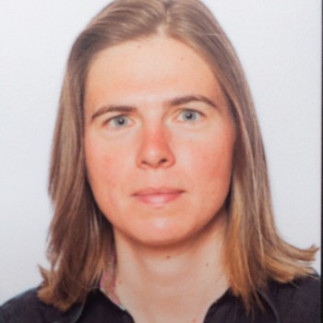ITER: The way to a new, clean, safe and nearly unlimited energy
Kristel Crombé
Ghent University, Belgium
Présentation en anglais
Vidéoconférence, Zoom #: 86826067985 (Zoom link)
Lorsque demandé, indiquer 'Un Sept Quatre Neuf' en chiffre.
Abstract: “I do believe that the development of fusion for the future world energy supply is not negotiable. If we want to quit our dependence on burning fossil fuels, which leads to ever-rising CO2 emissions, we have to deliver fusion energy to the grid as soon as we can.“ These words by Dr. Bernard Bigot, director general of ITER, define the context and motivation for the seminar.
First, a general introduction to nuclear fusion, the energy source that powers the stars, will be given, followed by the key physics processes behind the creation, the heating and the confinement of fusion plasmas on Earth. One of the main options for controlling the reactants is magnetic confinement. It constrains the plasma via the collective behaviour of its free charge carriers and their interaction with magnetic fields.
After that, the focus will shift to the ITER project, the world’s largest international endeavour for demonstrating the scientific and technological feasibility of fusion power for peaceful purposes. The ITER reactor is of the tokamak type (a specific type of magnetic configuration). It will demonstrate the conditions required to produce and sustain a burning plasma. In quantitative terms ITER is designed to have a capital Q above 10, which means 10 times more fusion output power, than the required input power, and this for at least 400 seconds. The current state of the project will be presented, as well as the future challenges.
While fusion power has been a promising long-term solution for our energy needs for many years, it is more and more becoming a reality now. To conclude with the words of Dr. Bigot: “I am convinced that in the future, propelled by the successful construction and operation of ITER, we will see fusion research transition from the laboratory to industrial scale. At that time, highly skilled engineers with a broad range of expertise, in addition to physicists, will be needed to operate ITER and to develop the science and technology required to build fusion power plants.”
Bio: Kristel Crombé has obtained her PhD at the Department of Applied Physics of Ghent University (Belgium) in 2005, with a study of spectroscopic methods to diagnose impurity ion dynamics in plasmas. During this period, she has worked on the TEXTOR tokamak at the Institut für Energie- und Klimaforschung Plasmaphysik (http://www.fz-juelich.de) in Jülich (Germany), and on the JET tokamak at the Culham Centre for Fusion Energy (http://www.ccfe.ac.uk) in Oxfordshire (UK). After obtaining the PhD she continued working at the Culham Centre for Fusion Energy for further development of the edge charge exchange recombination spectroscopy systems on JET. The measurements of the ion temperature, the rotation velocity and the radial electric field profiles have contributed to various experiments. Since 2009 she is also connected to the Laboratory for Plasma Physics of the Royal Military Academy in Brussels (Belgium), which is specialised in the physics and technology of radio frequency antennas for plasma heating in the ion cyclotron range of frequencies (ICRF). The laboratory has designed and constructed ICRF antennas for several fusion machines, including JET and ITER (https://www.iter.org/). Recently it has developed an ICRF antenna for the superconducting stellarator Wendelstein 7-X (https://www.ipp.mpg.de/w7x) in Greifswald (Germany). Dr. Crombé is involved in the installation and commissioning of the system and in the preparations of future experiments.
Cette conférence est présentée par le RQMP.

